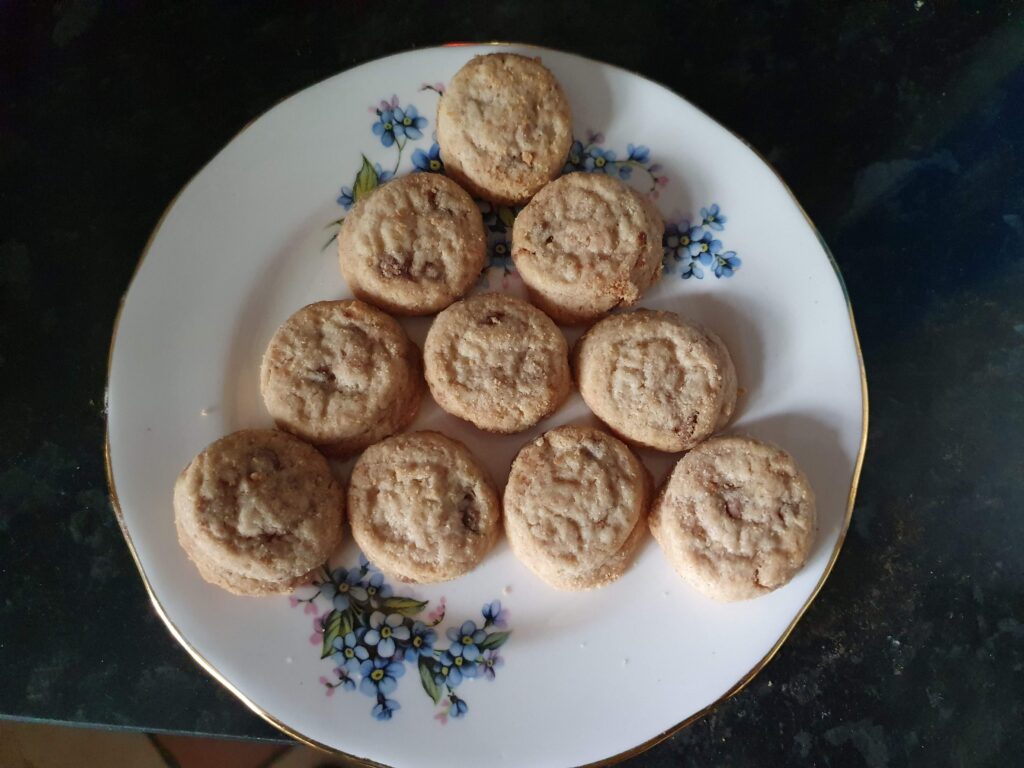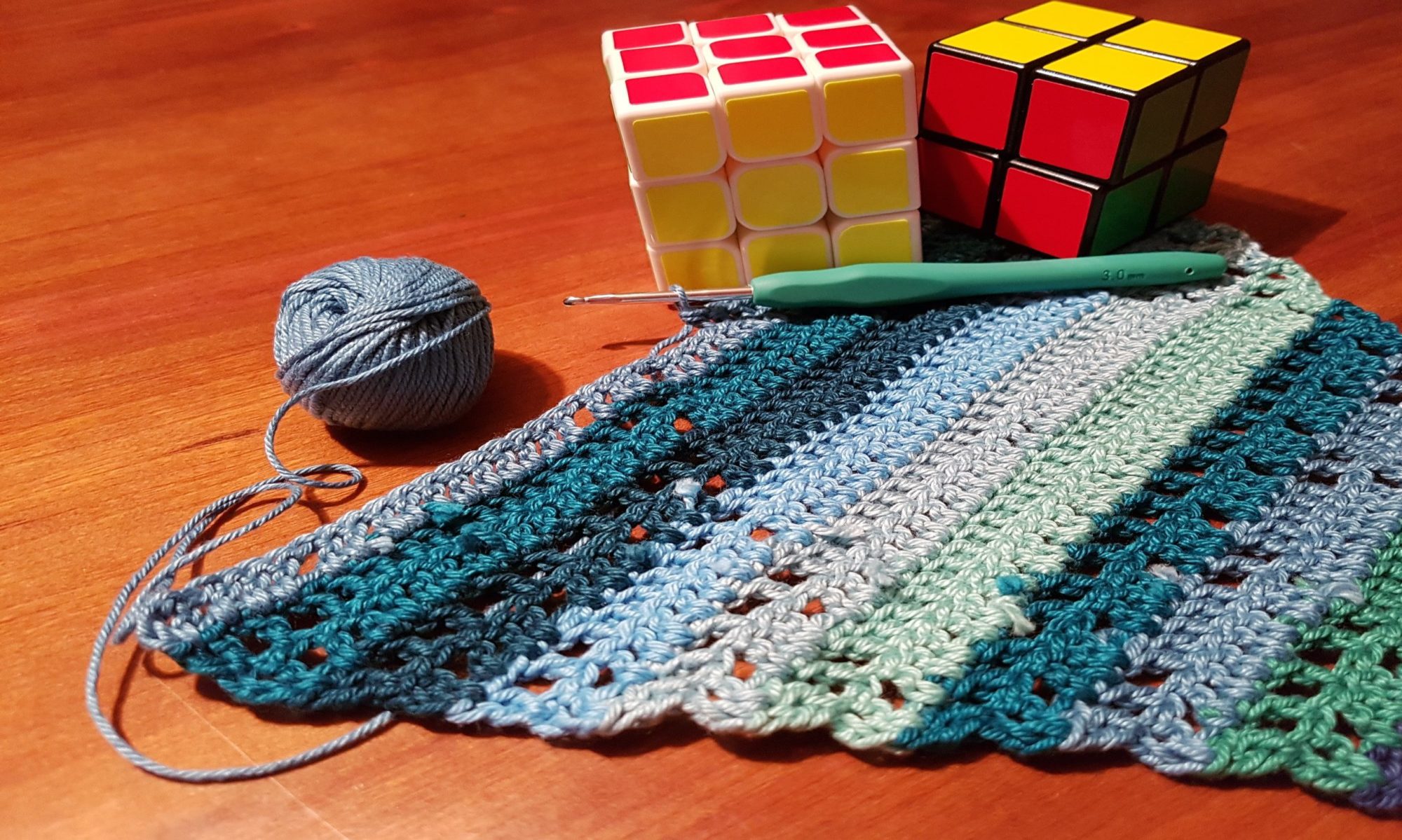Ten biscuits awaiting their fate
Another “notice, wonder” memory from lockdown – I got into the habit of taking a photo of any mathematically interesting morning snack that I enjoyed with my coffee for a while, and posting it on Twitter to provoke mathematical discussion. Back in April I was eating up some miniature cookies that were left over from a musical carousel biscuit tin that I had bought in the post-Christmas sales (musical carousel biscuit tin is every bit as awesome as it sounds, I promise you). They were small enough that it was difficult to estimate what should count as a proper portion, so I experimented with some different ways of arranging them on the plate:


Ten normal-sized biscuits would be a bit much I think, unless I’d been for a ten km run immediately before, which is something that has never happened to me, but ten of these tiny cookies seems like a reasonable fuel to accompany some coffee and then power my brain to write high-quality maths content…
It’s interesting to me though that ten cookies can be arranged in these two pleasing ways. In the first picture, the cookies show 10 as a triangular number, 1 biscuit on the top row, 2 on the second, 3 on the third and 4 on the fourth. The second picture steps up into the third dimension and represents 10 as a tetrahedral number (remember those from this post?) – a triangle of 6 (1+2+3) on the bottom layer, 3 (1+2) on the middle layer, and 1 on the top layer.
If you’re anything like me you’re now asking yourself which other numbers are both triangular and tetrahedral. Well 1 is a rather boring example, but how far after 10 do we have to go before we find another? And will it be a reasonable number of biscuits to eat in one sitting? I decided a quick way to find out would be to create a spreadsheet showing the triangular and tetrahedral numbers in Excel and just look down until I found a number that appeared in both columns. Thankfully the next example is small enough that I could just eyeball it, but I also remembered a neat trick for checking whether a number is a triangular number or not; if T is triangular, then 8T+1 is always square, so I got my spreadsheet to work out √(8x+1) for my tetrahedral numbers, and then looked for the ones which were exact answers rather than lots of decimal places. This gave me 1, 10, 120 and 1540, the first four numbers which are both triangular and tetrahedral according to the Online Encyclopedia of Integer Sequences. I think 120 or 1540 biscuits might just be too much for one person, so until Covid restrictions are lifted for long enough for me to share them, I will stick to just eating 1 or 10 biscuits at a time!
